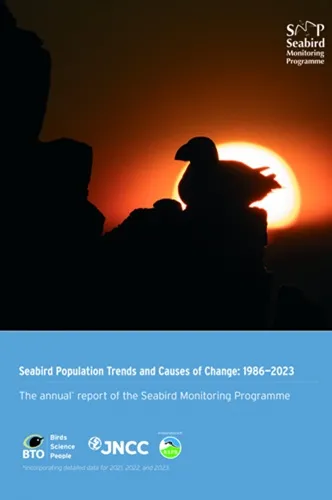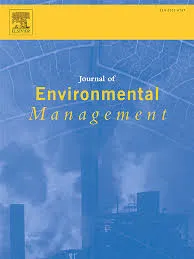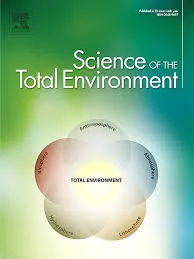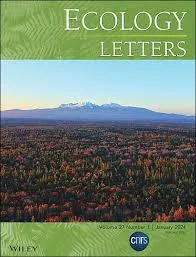BTO create and publish a variety of important articles, papers, journals and other publications, independently and with our partners, for organisations, government and the private sector. Some of our publications (books, guides and atlases) are also available to buy in our online shop.
Annual report of the Seabird Monitoring Programme
Seabird Population Trends and Causes of Change: 1986–2023
This report presents the latest seabird population trends in breeding abundance and productivity using data from the Seabird Monitoring Programme (SMP).
The report documents changes in the abundance and productivity of breeding seabird species in Britain and Ireland from 1986 to 2023, and provides a detailed account of the 2021, 2022 and 2023 breeding seasons.

Search settings
Behavioral responses to offshore windfarms during migration of a declining shorebird species revealed by GPS-telemetry
Author: Schwemmer, P., Mercker, M., Haecker, K., Kruckenberg, H., Kämpfer, S., Bocher, P., Fort, J., Jiguet, F., Franks, S., Elts, J., Marja, R., Piha, M., Rousseau, P., Pederson, R., Düttmann, H., Fartmann, T. & Garthe, S.
Published: 2023
A large tracking dataset was used to assess the behavioural responses of migrating Curlew to offshore windfarms, of which there are many in the North Sea and Baltic Sea. Most individuals showed medium-scale avoidance responses in the horizontal and vertical planes. Up to 15.8% of the individuals migrated at elevated risk without showing avoidance reactions. Collision risk and energetic constraints by circumventing the turbines are discussed.
19.05.23
Papers

A review of the impacts of air pollution on terrestrial birds
Author: Barton, M.G., Henderson, I., Border, J.A. & Siriwardena, G.M.
Published: 2023
A review paper by BTO considers 203 studies of the effects of air pollution on 231 bird species. Of these studies, 82% document at least one negative effect associated with increasing levels of pollution. The review also highlights biases towards particular study species, especially Great Tit and Pied Flycatcher, and also towards particular geographical regions (Western Europe) and pollutants (heavy metals). The paper proposes research approaches that could help to provide a fuller understanding of how birds are impacted by air pollution.
15.05.23
Papers

Farmland practices are driving bird population decline across Europe
Author: Rigala, S., Dakos, V., Alonso, H., Auniņš, A., Benkőe, Z., Brotons, L., Chodkiewicz, T., Chylareck, P., de Carlil, E., del Moral, J.C., Domșa, C., Escandell, V., Fontaine, B., Foppen, R., Gregory, R., Harris, S., Herrando, S., Husby, M., Leronymidou C., Jiguet, J., Kennedy, J., Klvaňová, A., Kmecl, P., Kuczyński, L. , Kurlavičius, P., Kålås J.A., Lehikoinen, A., Lindström, Å, Lorrillière, R., Moshø, C., Nellis, R., Noble, D., Eskildsen, D.P., Paquet, J-Y., Pelissié, M., Pladevall, C., Portolou, D., Reif, J., Schmid, H., Seaman, B., Szabo, Z.D., Szép, T., Florenzano, G.T., Teufelbauer, N., Trautmann, S., van Turnhout, C., Vermouzek, Z., Vikstrøm, T., Voříšek, P., Weiserbs, A. & Devictor, V.
Published: 2023
Understanding how human activities influence biodiversity change at different spatial scales is one of the key questions in our attempts to tackle biodiversity loss. This study, using the most comprehensive dataset of its kind, sought to understand the drivers of population change in European birds.
15.05.23
Papers

Landscape fires disproportionally affect areas of conservation priority but only under low moisture conditions
Author: Kirkland, M., Atkinson, P.W., Pearce-Higgins, J.W., De Jong, M., Dowling, T.P.F., Grummoe, D., Critchley, M. & Ashton-Butt, A.
Published: 2023
In this study, BTO scientists mapped large fires that occurred over a 19-year period in Polesia, a region containing some of Europe’s last pristine peatlands and lowland forests in Eastern Europe. Fires are of great concern to policymakers in the region due to the economic and health costs, and a lot of resources are used to suppress fires during hot and dry years. There are potentially natural solutions to fires, however, that could also benefit birds, biodiversity and climate issues. These ‘nature-based’ solutions include restoring drained wetlands. In this study, freely-available satellite data were used to explore the prevalence of large fires and the factors causing them. This allowed researchers to explore whether restoring the landscape’s wetlands could reduce the increasing risk of large, damaging fires as the climate changes.
01.05.23
Papers

Eco-evolutionary drivers of avian migratory connectivity
Author: Fattorini, N., Costanzo, A., Romano, A., Rubolini, D., Baillie, S., Bairlein, F., Spina, F., & Ambrosini, R.
Published: 2023
01.05.23
Papers
